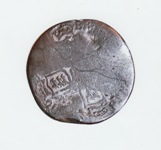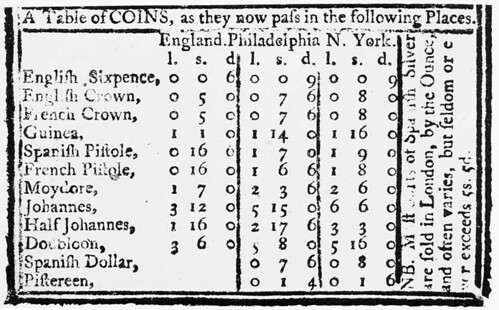
PREV ARTICLE
NEXT ARTICLE
FULL ISSUE
PREV FULL ISSUE
KING WILLIAM III SIXPENCE FOUND IN MASSACHUSETTS The Boston Globe published an article this week on a Cape Cod man's discovery of an early British coin on the island. Anne Bentley and another E-Sylum reader spotted it. -Editor  Peter Burgess, a retired psychologist, who found a strange-looking coin on his property last spring, recently discovered it was over three hundred years old. Peter Burgess, a retired psychologist, who found a strange-looking coin on his property last spring, recently discovered it was over three hundred years old."At first, I wasn't sure what it was," said Burgess. "It didn't look so much like a coin, but like a brown wafer." Upon further study, Burgess noticed small markings on the coin: a crown, three lions and some numerals. The coin turned out to be an approximately 313-year-old English silver sixpence, which was issued only during the reign of King William III, who ruled over England from 1689 to 1702, according to researchers. "It's a pretty significant find," said Dan Sanders, a Truro Historical Society historian and retired physicist, who is also a friend of Burgess. "It's one of the earliest coins I've ever seen on Cape Cod, and it's right where the town was founded." Sanders said it's unusual to find an English coin from this period on Cape Cod. "It's rare that an English coin of this kind would be in the Colonies," he said. "Mostly at that time they used Colonial coinage, if any. Most people of that time and place were self-sufficient. It was very much more a bartering society." Though not worth much money to collectors, the coin holds historical value to Truro and the rest of the Cape, Sanders said. Burgess spent several months researching the coin online, before he contacted Louis Jordan, director of Special Collections department at the University of Notre Dame, who definitively identified the coin. To read the complete article, see: Cape man finds 313-year-old sixpence (http://www.boston.com/news/local/breaking_news /2009/06/_the_valuable_o.html) Tom Kays researches colonial and pre-colonial era coins dug up in the U.S., so I asked him about the article's assertion that "It's rare that an English coin of this kind would be in the Colonies". Tom writes: I hope Lou got to see the other side where the mint mark might be. The first two date digits are 16 ruling out 1700 or later. Six pence are small and thin and this one has a good century of wear such that I think it was deposited in the bank of Mother Earth closer to the War of 1812, making it not the earliest coin to hit the sod in old Cape Cod. Pound/shillings/pence continued in use as money of account in New England to about 1835. It was not cricket to export gold and silver coin of the realm in large quantities for commercial purposes, but in service to His Majesty, it could and did walk away in small amounts with soldiers and sailors. Such coins were seen in America and Canada but did not dominate daily commerce with a preponderance of numbers. I asked Lou Jordan as well, and he writes: Back in January the owner of the item e-mailed me stating he had a Plantations Token in pewter and asked me to confirm his attribution. I identified the item as a William III sixpence from his photos and asked if it was silver or pewter, since pewter specimens were counterfeits but have been found in America and in England. The reply was that after further analysis it was determined that the coin was silver. Apparently the local historian was asked about the find. Much of what he says is incorrect. In fact, I recently wrote a long article in the St. Patrick's COAC volume discussing all of the coins in circulation in British America from the earliest settlements to ca. 1660 (just before the St. Pat's arrived in NJ) and several English coins were included in the documents and have been recovered in controlled archaeological digs. So, to some degree English coinage was found in America, and during the first half of the 18th century William III silver did circulate (both regal and counterfeit). It certainly was not as common as Spanish-American silver but it would not be unknown by any means! By the way, that specific coin could have been deposited at any point during the 18th century (or possibly even later!). 1759 edition of Father Abraham's Almanack by Abraham Weatherwise of Philadelphia lists the English sixpence coin (6d) as one of the items that circulate. And obviously, the table was limited to coins that would turn up with some frequency.  Wayne Homren, Editor The Numismatic Bibliomania Society is a non-profit organization promoting numismatic literature. See our web site at coinbooks.org. To submit items for publication in The E-Sylum, write to the Editor at this address: whomren@gmail.com To subscribe go to: https://my.binhost.com/lists/listinfo/esylum All Rights Reserved. NBS Home Page Contact the NBS webmaster 
|